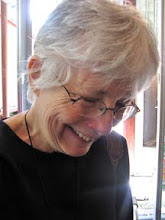The feast of the Transfiguration is actually celebrated in August, yet we always hear the story again the last Sunday before Lent:
Peter said to Jesus, "Lord, it is good for us to be here. If you wish, I will put up three shelters—one for you, one for Moses and one for Elijah." —Matthew 17:4
As many times as we Christians read this story, do we ever stop making an idol of familiarity? I cannot count the times church people have responded to a new event — from contextual crisis to their own individual angst — by grasping at familiarity: declare the new wrong because it is new, fit the new into old categories, greet the new by reenacting old conflicts, treat the Word as an icon to be treasured because it never changes, rather than as a lance to the heart bringing God into this very day. —Tom Erich
The Transfiguration is many stories within the story... deeply packed, full of different meanings for different people. (Or different meanings at different times for the same people, or all of the above.) For Jesus perhaps it was an anchor, what self-help seminars call a resource state. Our celebrant this morning had a different take on the story than Tom's. Both are important, I think, as we move forward into Lent.
"If the picture is in a frame. it goes on the wall." she said. She was relating a story from her own childhood, her own heritage, where, because of humidity and culture, in her grandparents' home, all framed photographs were hung up high, near the ceiling. "You had to look up," she went on, "much as the disciples had to look up to the scene of Jesus talking with Elijah and Moses." She went on to point out that in Matthew's Gospel, Peter is not scolded for wanting to memorialize the event he has just witnessed. The moment passes, and Jesus is there alone with them again.
The moment passes. So much of my dealings with God and Spirit can be summed up in those three words. I am honored with glimpses, blessed with instantaneous understandings, given the benefit of peaceful moments... but they are gone before I am sometimes even aware they were there. Coming back to earth isn't easy; of course we want to frame the picture, the feeling, the remembrance of who we knew ourselves to be in that moment.
But even a framed picture is only a two-dimensional reminder of whatever experience we had which suffused every particle of our being. As Barbara Brown Taylor has said, "...reality is not flat, but deep."
And it is this very depth that familiarity cannot capture. So, as Tom says above, we resort to what we know in our fear of what we cannot know fully. To embrace the new will mean to embrace the cross. To understand the Word of God to be an organic, evolving, transforming process, rather than words on a concrete tablet is to see the safety nets removed as we venture forth on the precipice. "...a lance to the heart bringing God into this very day" is what we can find during Lent... if we're willing.
Subscribe to:
Post Comments (Atom)




1 comment:
Beautiful thoughts, CJ.
Post a Comment